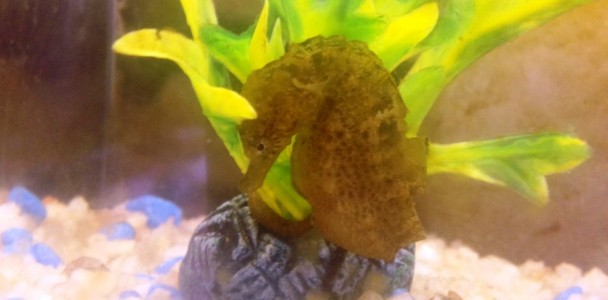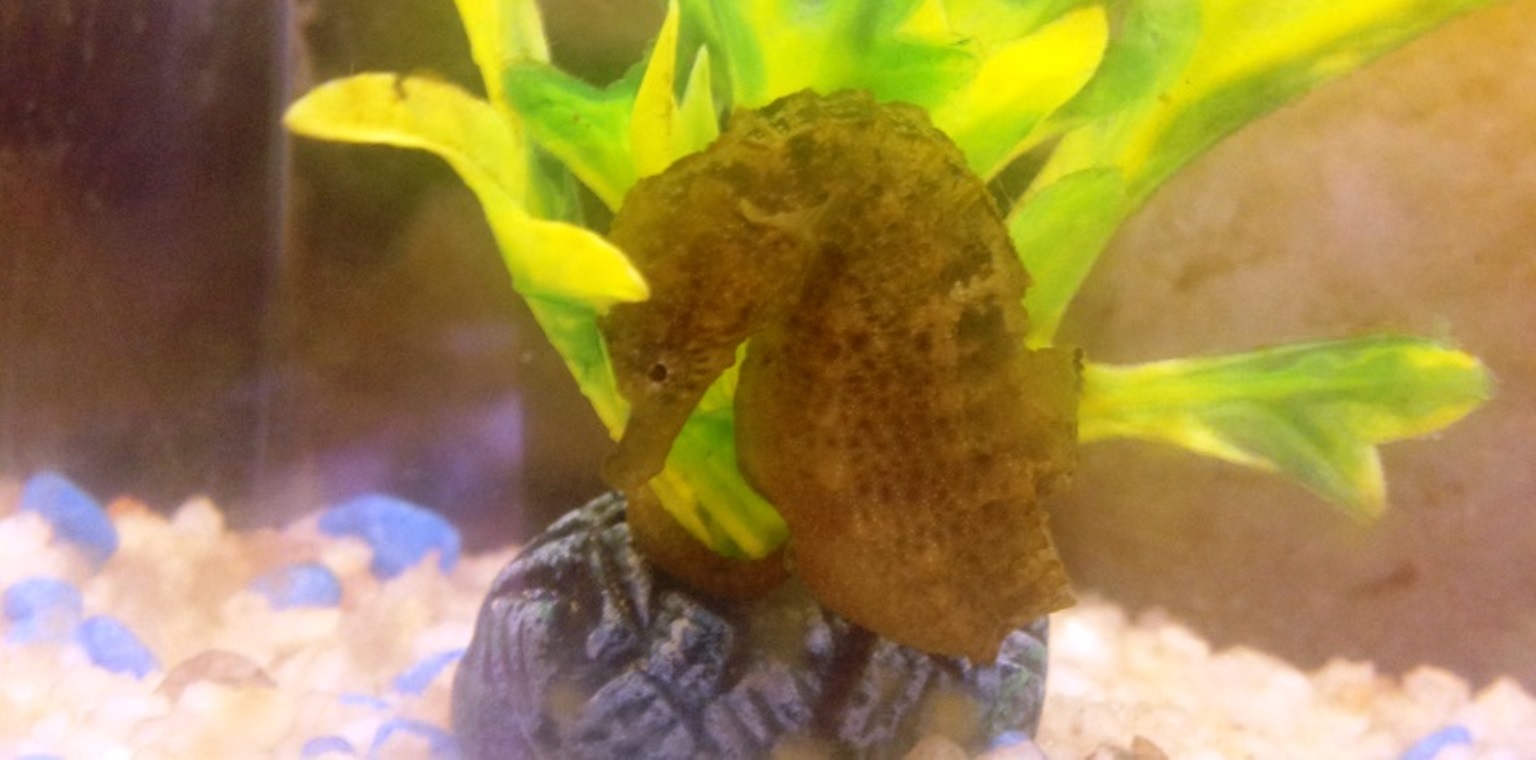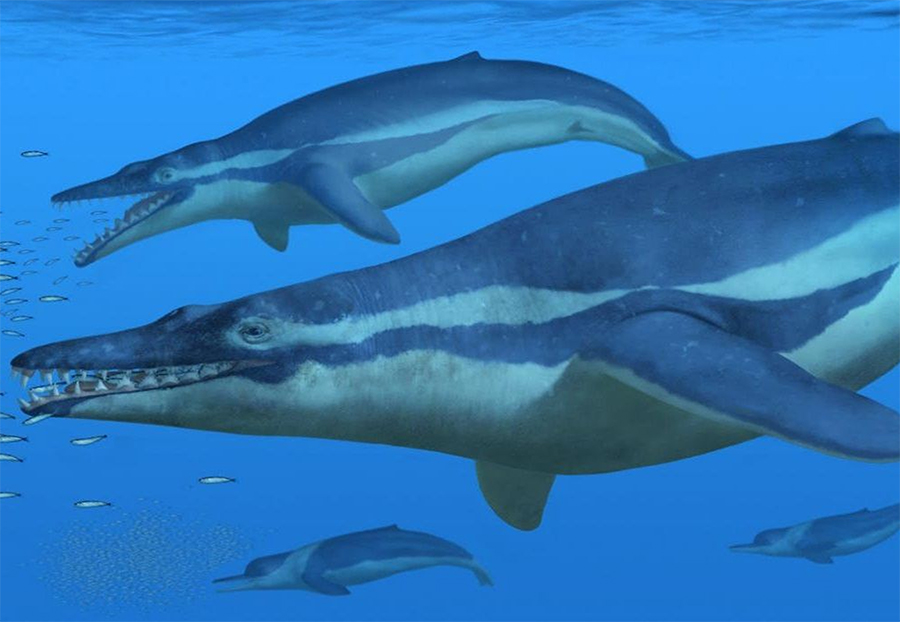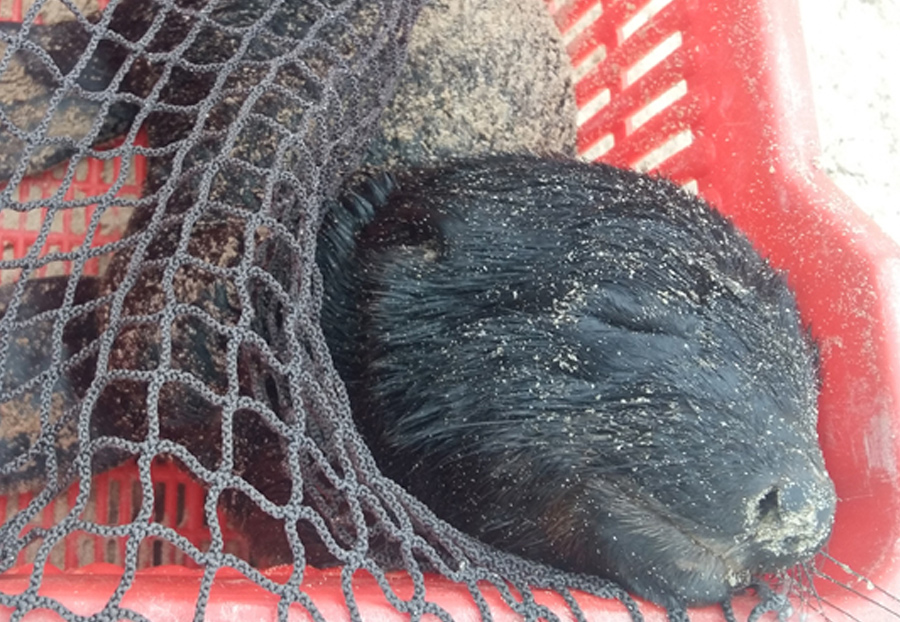Interesting facts on the Knysna seahorse (Hippocampus capensis)
 Sea horses (hippocampus) are fish that can be recognized by their horse-like head that is right angled to the body and a muscular tail that they use as an anchor. Sea horses are well camouflaged and are generally found holding onto sea grass stems, coral heads or artificial reefs where they sit and ambush their prey. An unusual feature of the seahorse is that it has no stomach and therefore has to graze constantly because food moves through their digestive system quickly. They need to eat up to 3000 small copepods a day to satisfy their energy requirements. Like most fish they have gills, a swim bladder and fins, but their eyes can move independently of each other. The Knysna seahorse (Hippocampus capensis) is endemic to South Africa and is the only seahorse species known to exclusively inhabit estuaries.
Sea horses (hippocampus) are fish that can be recognized by their horse-like head that is right angled to the body and a muscular tail that they use as an anchor. Sea horses are well camouflaged and are generally found holding onto sea grass stems, coral heads or artificial reefs where they sit and ambush their prey. An unusual feature of the seahorse is that it has no stomach and therefore has to graze constantly because food moves through their digestive system quickly. They need to eat up to 3000 small copepods a day to satisfy their energy requirements. Like most fish they have gills, a swim bladder and fins, but their eyes can move independently of each other. The Knysna seahorse (Hippocampus capensis) is endemic to South Africa and is the only seahorse species known to exclusively inhabit estuaries.
The Knysna seahorse is a medium-sized seahorse (8-12cm) with a characteristic short snout and the males have a slight keel above their brood pouch. They are typically mottled brown, but can range in colour from white, yellow, orange, green and beige to brown and black.
Knysna seahorses have the smallest geographical range of any seahorse and can be found in 3 estuaries, Knysna, Swartvlei and Keurbooms. Before 2002 they could also be found in the Klein Brak estuary. They occur in water depths of 0.5-20 m and usually among aquatic plants.
Knysna seahorses sexually mature within 1 year after birth, at approximately 6.5cm in length, and like most seahorses they are monogamous . A unique and unusual characteristic of sea horses is that the males carry the babies in a true pregnancy, with both internal fertilization and the pouch tissues having capillaries that supply the embryos with oxygen and fluids. Between 7 and 200 babies will hatch after a gestation period of 14-45 days (depending on the water temperature). The babies are tiny, measuring only 0.8-1.6cm in length. A few hours after the male have given birth the female will deposit more eggs in his pouch.
Knysna seahorses were the first seahorse species to be classified by the International Union for the Conservation of Nature (IUCN) as endangered. All over the world sea horse populations are threatened by the degradation of estuaries, sea grass beds and mangroves. They are also accidentally captured in fishing gear, and over exploited for use in traditional medicines and the aquarium trade. The Knysna seahorse is also vulnerable to large temperature fluctuations which are common in this area
During a population study on the Knysna seahorse in 2002-2003 it was found that large flooding events had negatively affected the populations in the Keurbooms and Swartvlei estuaries. Knysna seahorses were found in the Keurbooms during the survey in 2002, but not in 2003. Surveys have been done since 2003 to see if seahorses had returned to the estuary, but none where found until 2014 when the Orca Foundation did a SCUBA dive survey. It is thought that they were brought in from the Knysna Estuary by ocean currents because they are able to withstand fluctuations in salinity.
Knysna Seahorses are protected by the South African Fisheries Act No. 58, the Marine Living Resources Act 1998 and the White Paper for Sustainable Coastal Development in South Africa.
References
– Bell E.M. Lockyear J.F. McPherson J.M. Marsden A.D. Vincent A.C.J. 2003 First field studies of an Endangered South African seahorse, Hippocampus capensis Environmental Biology of Fishes 67: 35–46,
– Lockyear J.F. Hecht T. Kaiser H. Teske P.R. 2006 The distribution and abundance of the endangered Knysna seahorse Hippocampus capensis (Pisces: Syngnathidae) in South African estuaries African Journal of Aquatic Science 2006, 31(2): 275–283
– TESKE P.R. CHERRY M. I. MATTHEE C.A. 2003 Population genetics of the endangered Knysna seahorse, Hippocampus capensis Molecular Ecology 12, 1703 –1715
– Teske P.R. Lockyear J.F. Hecht T. Kaiser H. 2007 Does the endangered Knysna seahorse, Hippocampus capensis, have a preference for aquatic vegetation type, cover or height? African Zoology Vol. 42, No. 1
– Vromans D.C. Maree K.S. Holness S. Job N. Brown A.E. 2010 The garden route biodiversity sector plan 2010 for George, Knysna and Bitou municipality.




